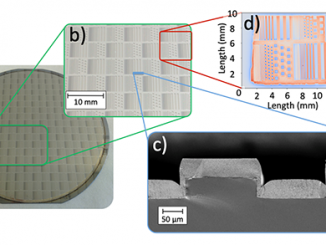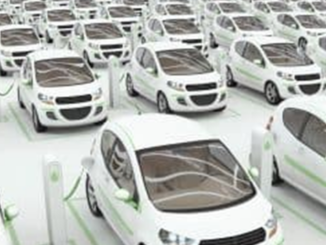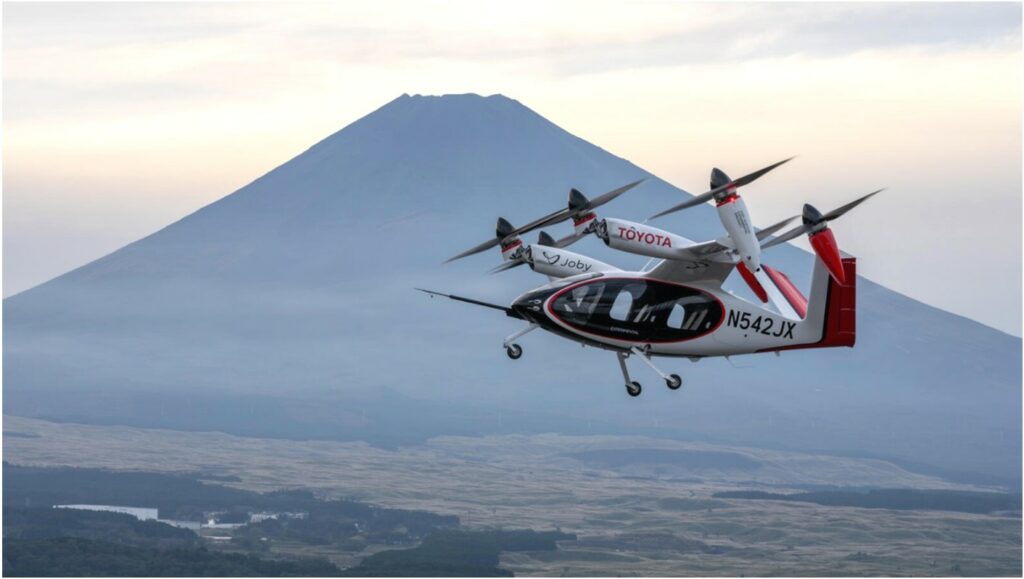
Powered by six permanent-magnet motors and fueled by either battery power or hydrogen, electric vertical take-off and landing aircraft by Joby Aviation are taking to the skies in strategic test flights. In Japan, Toyota has stepped up its collaboration with the company in the form of a fresh $500 million investment while in Dubai a new air taxi terminal is taking shape.
Joby’s electric air taxi is designed to carry a pilot and four passengers at speeds of up to 200 mph, offering high-speed mobility with a fraction of the noise produced by helicopters and zero operating emissions. The aircraft has six tilt-propellers powered by specially designed high performance dual wound motors and drives. Four propellers and their nacelles tilt vertically, the other two propellers tilt vertically with a linkage mechanism.
The motors can generate 236 kilowatts of peak power at a weight of just 28 kg including motor and inverter. They are designed to be particularly torque-dense without a typical gear box, delivering the power and torque needed with only one moving part — allowing the propellers to spin slowly while generating the amount of thrust needed for flight.
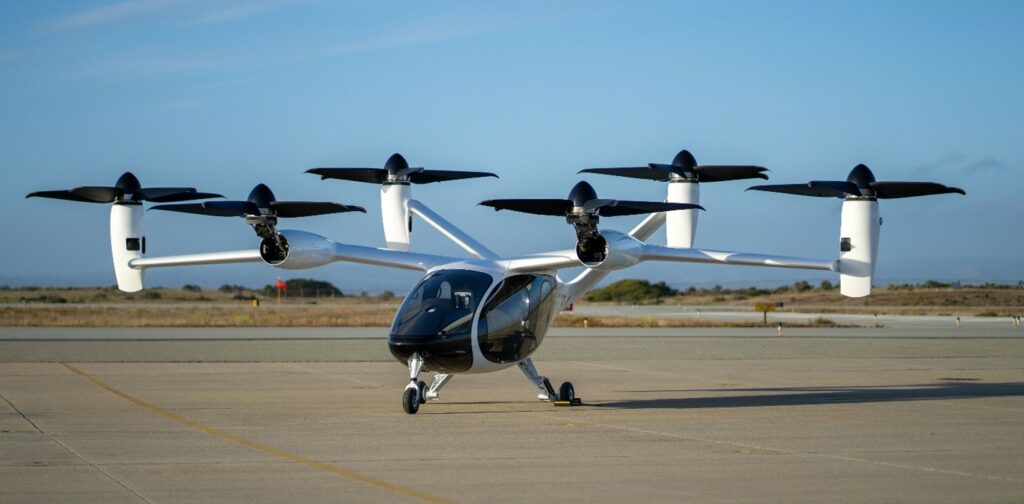
Joby and its resolute partner Toyota jointly announced on November 4 the completion of Joby’s first international exhibition flight which took place at Toyota’s Higashi-Fuji Technical Center in Shizuoka, Japan at the end of October. Within sight of Mount Fuji, the flight marked an opportunity to demonstrate the low acoustic footprint of Joby’s emissions-free aircraft and celebrate nearly seven years of collaboration between the two companies, during which time Toyota has supported Joby by providing insights from its extensive automotive manufacturing and technology expertise. Toyota engineers now work side-by-side with the Joby team in California and, in 2023, the two companies signed a long-term agreement for Toyota to supply key powertrain and actuation components for the production of Joby’s aircraft.
“Our first overseas flight marks a significant milestone on our journey towards making clean air travel an everyday reality,” said JoeBen Bevirt, Founder and CEO of Joby. “We share Toyota’s vision for the future of mobility and are honored to have had the opportunity to present a glimpse of that future through our flight in Japan.”
“Air mobility has the potential to change our ‘sense of distance and time,’ and open a future with the new option of air mobility that will further enrich the lives of many people,” said Hiroki Nakajima, executive vice president and chief technology officer of Toyota Motor Corporation, at the event. “Toyota is committed to deepening our collaboration with Joby and we will continue to work together to realize our shared dreams.”
Only weeks earlier, Toyota committed to invest an additional $500 million in Joby to support the certification and commercial production of the company’s electric air taxi. The additional funds will bring the auto manufacturer’s total investment in Joby to $894 million and include plans to establish a manufacturing alliance to support the first phase of commercialization.
Hydrogen-fueled developments continue at Joby and H2FLY in Germany

Joby’s hydrogen-electric program builds on technology developed by subsidiary H2FLY, a leading hydrogen aviation developer based in Stuttgart, Germany acquired in 2021, and forms part of Joby’s future technology roadmap. On June 24, a hydrogen-electric, vertical take-off and landing demonstrator aircraft from the company completed a landmark flight of 523 miles in California with water as the only by-product. The flight demonstrates potential for emissions-free regional travel without requiring a runway. The company’s hydrogen-electric program is supported through a partnership with the U.S. Air Force’s Agility Prime program.

“Traveling by air is central to human progress, but we need to find ways to make it cleaner. With our battery-electric air taxi set to fundamentally change the way we move around cities, we’re excited to now be building a technology stack that could redefine regional travel using hydrogen-electric aircraft,” noted Bevirt.
“Imagine being able to fly from San Francisco to San Diego, Boston to Baltimore, or Nashville to New Orleans without the need to go to an airport and with no emissions except water. That world is closer than ever, and the progress we’ve made towards certifying the battery-electric version of our aircraft gives us a great head start as we look ahead to making hydrogen-electric flight a reality.
“The vast majority of the design, testing and certification work we’ve completed on our battery-electric aircraft carries over to commercializing hydrogen-electric flight. In service, we also expect to be able to use the same landing pads, the same operations team, and Joby’s ElevateOS software that will support the commercial operation of our battery-electric aircraft.”
The landmark test flight, believed to be the first forward flight of a vertical take-off and landing aircraft powered by liquid hydrogen, used a converted Joby pre-production prototype battery-electric aircraft fitted with a liquid hydrogen fuel tank and fuel cell system. It landed with 10% of its hydrogen fuel load remaining. The aircraft previously completed more than 25,000 miles of testing as a battery-electric aircraft at Joby’s base in Marina, California.
Using the same airframe and overall architecture as Joby’s core, battery-electric aircraft, the demonstrator features a liquid hydrogen fuel tank, designed and built by Joby, which stores up to 40 kilograms of liquid hydrogen, alongside a reduced mass of batteries. Hydrogen is fed into a fuel cell system, designed and built by H2FLY, to produce electricity, water, and heat. The electricity produced by the hydrogen fuel cell powers the six electric motors on the Joby aircraft, with the batteries providing additional power primarily during take-off and landing.
“Agility Prime has been very supportive of hydrogen-powered aircraft development and testing as it aligns with the program’s goals to advance transformative vertical lift technologies and broader Department of Defense operational energy goals of energy substitution and diversification, and energy demand reduction,” said Jacob Wilson, (Acting) Branch Chief, AFWERX Agility Prime. In 2023, Joby delivered its first aircraft to the Air Force as part of a $131 million contract to deliver and operate aircraft for the DoD. Stationed at Edwards Air Force Base in southern California, the craft is to be flown on base to demonstrate logistics missions.
Work begins on first Dubai vertiport
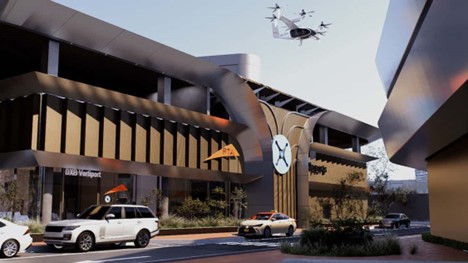
In November, Joby announced that construction has begun on the first vertiport in its planned Dubai air taxi network. Located at Dubai International Airport, it is one of four initial locations that will form Joby’s network of vertiports for the air taxi service the company plans to launch in the Emirate as soon as late 2025, with three additional vertiports planned for development elsewhere in the area.
The vertiport is designed to be integrated with Dubai’s multimodal transport network, providing seamless connectivity with Dubai Metro’s Emirates Station 2, DXB Airport, parking infrastructure, and other ground transportation options. The three-story, 3,100-square-meter facility is designed to demonstrate a future vision for air travel focused on convenience and seamless passenger movements. There will be two take-off and landing stands, each equipped with the Joby-designed Global Electric Aviation Charging System to support rapid vehicle charging and conditioning in between flights.
Joby was founded in 2009 and has since completed thousands of test flights, including exhibition flights from the iconic Downtown Manhattan Heliport in New York City. Listed on the New York Stock Exchange, it has raised more than $2 billion of funding to date with other major investors including Delta Air Lines, SK Telecom, Uber and Baillie Gifford.
In other recent progress towards commercialization, Joby rolled its third aircraft off its pilot production line in Marina, and broke ground on an expanded facility in California that will more than double its manufacturing footprint. In August, it confirmed that the fourth of five stages of the type certification process is now more than one-third complete on the Joby side. For more info, see www.jobyaviation.com, www.h2fly.de.


